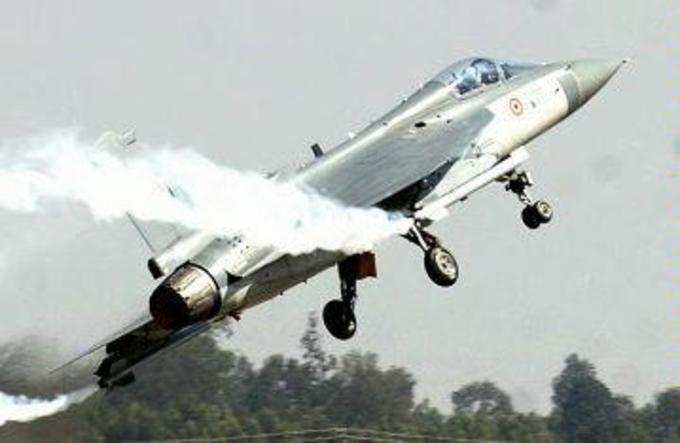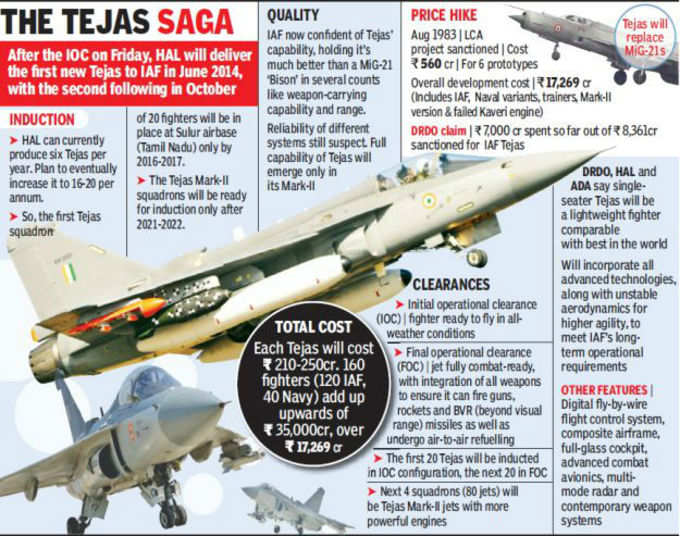
NEW DELHI: When the
Having clocked almost 2,420 flight tests since its prototype first flew in January 2011, the lightweight multirole Tejas fighter will finally zoom past the initial operational clearance (
"This Tejas Mark-I is much better than a MiG-21 'Bison' on several counts, including weapon-carrying capability and range. But the fighter's full capabilities will emerge only in the Tejas Mark-II version, with a more powerful engine, radar and weapons, which is slated to be ready by December 2018," said a top
But that is in the future. Friday will mark the actual IOC - which basically signifies the fighter is fully airworthy in different conditions, from extremely low temperatures of high-altitude areas to the searing heat of deserts - of the Tejas Mark-I. It will not be the specious one that the combine of Defence Research and Development Organization (DRDO),

The Tejas Mark-I fighter, however, will be ready to go to battle only in 2015 once it gets the final operational clearance (FOC), after integration of all weapons and other systems to ensure it can fi re 23mm guns, rockets and BVR (beyond visual range) missiles as well as undergo air-to-air refuelling. As of now, the Tejas can let loose only close-range R-73 air-to-air missiles and air-to-ground laser and unguided bombs.
It's a no-brainer that India needs to have its own
But the way the LCA project has meandered over the years, since it was fi rst approved in August 1983 at a paltry cost of Rs 560 crore to replace the ageing MiG-21s, has tested everyone's patience. So much so that TOI in April 2003, just before then PM
Down to just 34 fighter squadrons, IAF is of course still fl ying the obsolete MiG-21s. Due to the huge delay in the LCA project, it still has around 250 MiG-21s in its combat fleet, having further staggered their already long-delayed retirement by at least another five years. Not only has the LCA been in the making for 30 years, with deadlines being missed time and again, its overall developmental cost has also zoomed up to Rs 17,269 crore. This includes the Kaveri aero engine, sanctioned in 1989 at a cost of Rs 2,839 crore, which flopped miserably.
Consequently, while the first lot of Tejas will be powered by the American
However, defence scientists pooh-pooh all this talk of high costs.
"A fourth-generation-plus fighter, Tejas will still be among the cheapest fighters in its class in the world. It's not easy to develop a digital fl y-by-wire supersonic fighter from scratch, especially when India faced international sanctions for several years after the Pokhran-II nuclear tests," said a
Though late in coming, the Tejas is certainly critical for the IAF to meet its lightweight fighter requirements. While the heavyweight fighter category is taken care of by the Sukhoi-30MKIs, the medium range is to be met by the proposed almost $20 billion MMRCA (medium multirole combat aircraft) project to acquire 126
"The MMRCA and Tejas squadrons are very critical for us to maintain our deterrence capability. Otherwise, our force levels will go down rapidly," says